 A Tour of Hyogo's Terroir
A Tour of Hyogo's Terroir
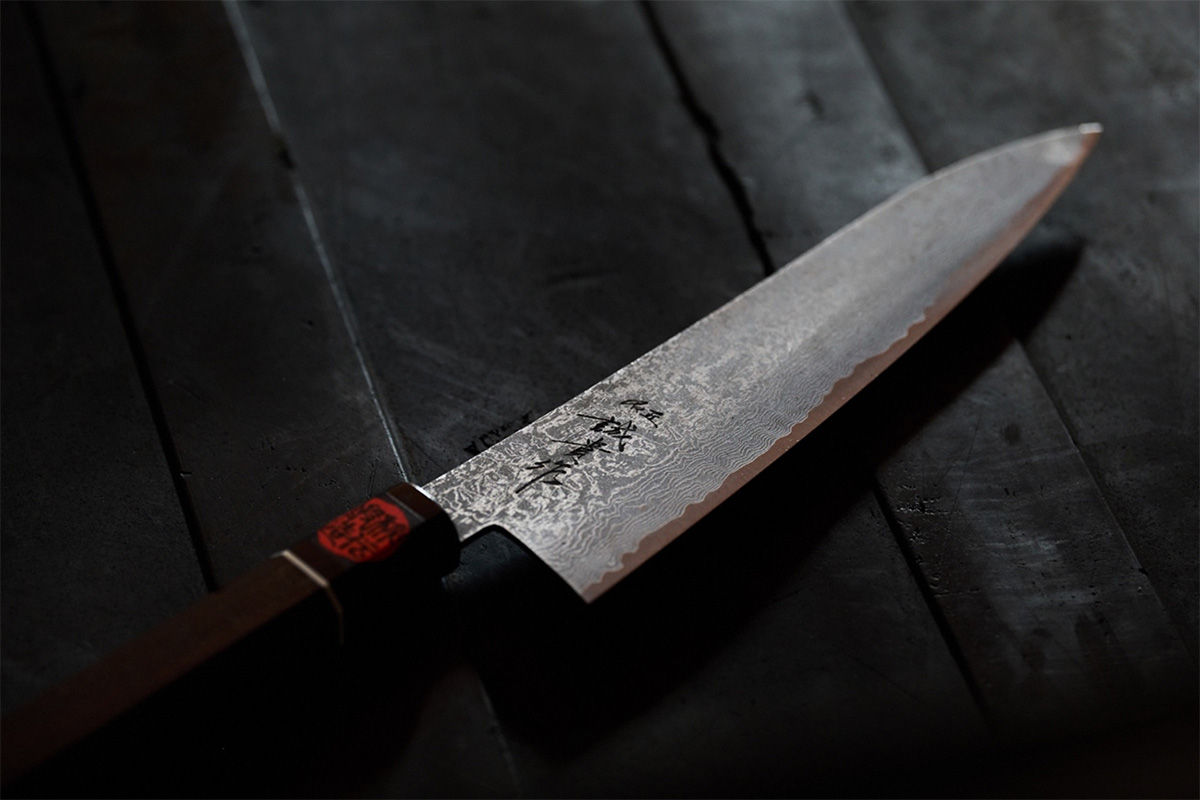
The Gyuto, praised as the best in the world by knife enthusiasts overseas. It boasts an incredibly sharp edge made from the finest steel, and the layered pattern, unique to hand-forging, features a delicate design reminiscent of Japanese paintings.
Miki City in Hyogo Prefecture is one of Japan’s leading towns for metalwork. The area around “Tanaka Kazunori Blade Manufacturing” was once a village that flourished as a blacksmith for grass-cutting sickles. The fourth-generation owner, Tanaka Shigeki, discontinued the production of grass-cutting sickles that had been carried on through his father’s generation and now focuses solely on crafting knives.
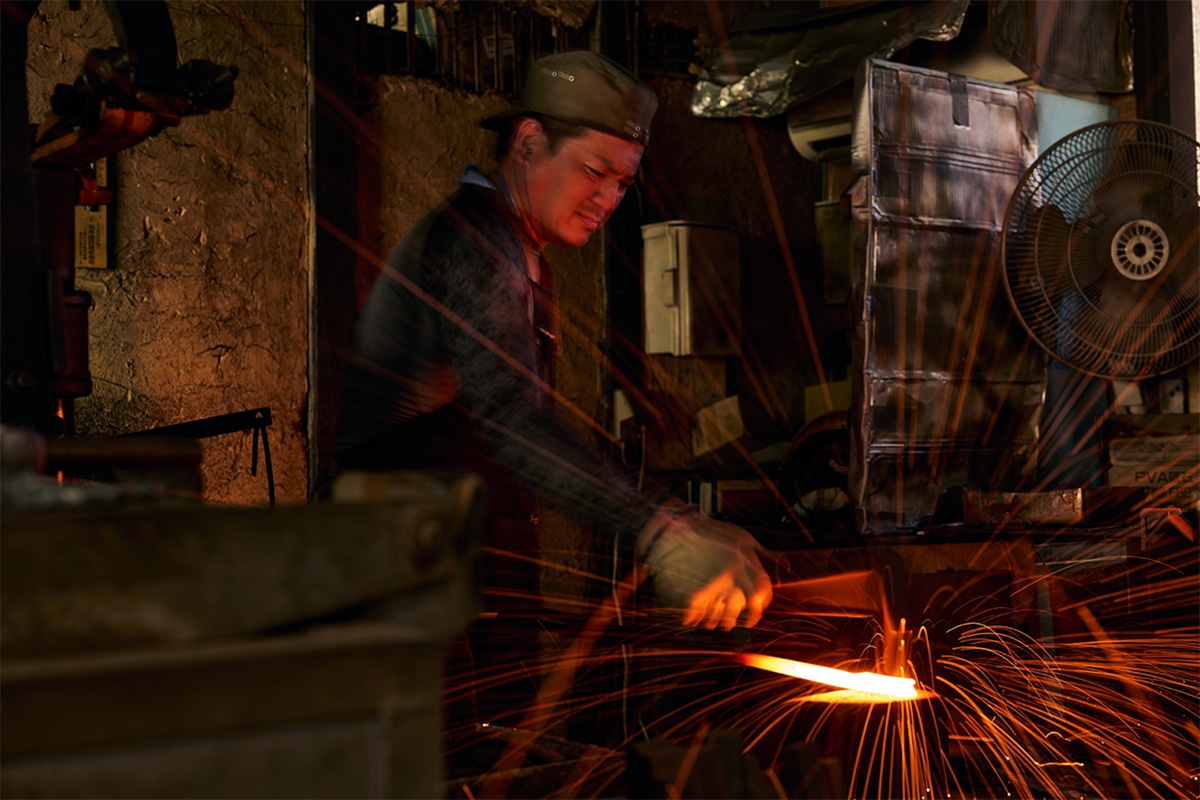
The fourth-generation owner of “Tanaka Kazunori Blade Manufacturing,” Tanaka Shigeki, offers around 60 types of standard knives. About 70% of these are exported overseas. There are collectors who specifically seek out “Made in Japan” knives, especially those bearing the “Tanaka Shigeki” brand.
Modern Japanese knives are mostly shaped with lasers, heat-treated, and sharpened using machines, but all of Tanaka’s knives are hand-forged. Using techniques passed down for over a thousand years, which he learned in Echizen City (formerly Takefu) in Fukui Prefecture, a region recognized for its traditional crafts, he continues to forge knives that have a flexible resilience while maintaining a hard, sharp edge.
“Drawing out 100% of the material’s potential is the job of a blacksmith. Knives made by hand are completely different in performance at the particle level compared to those made by machines. We heat iron and steel to 1200 degrees Celsius and hammer them over and over, breaking down the particles, filling in the gaps, and expelling impurities. We tighten and refine the particles at the cutting edge of the steel, down to the tiniest serration on each particle. The finer the particles, the sharper the knife will be.”
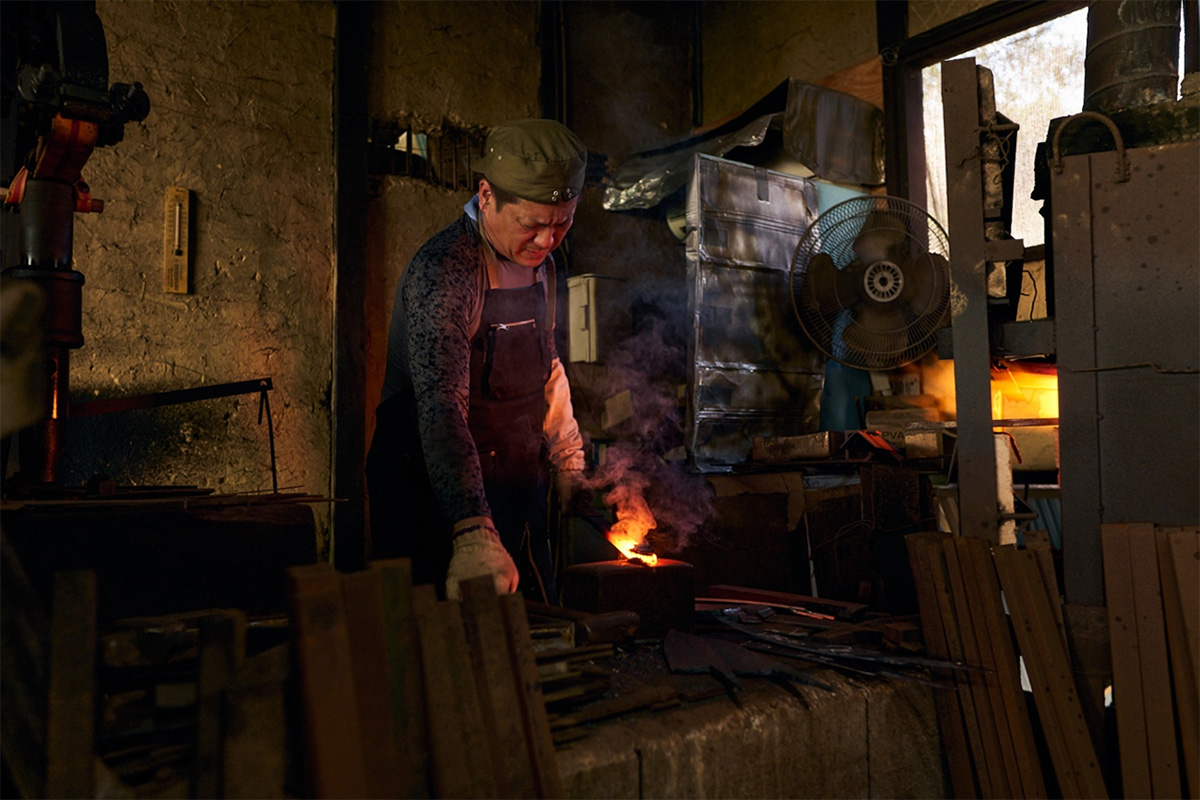
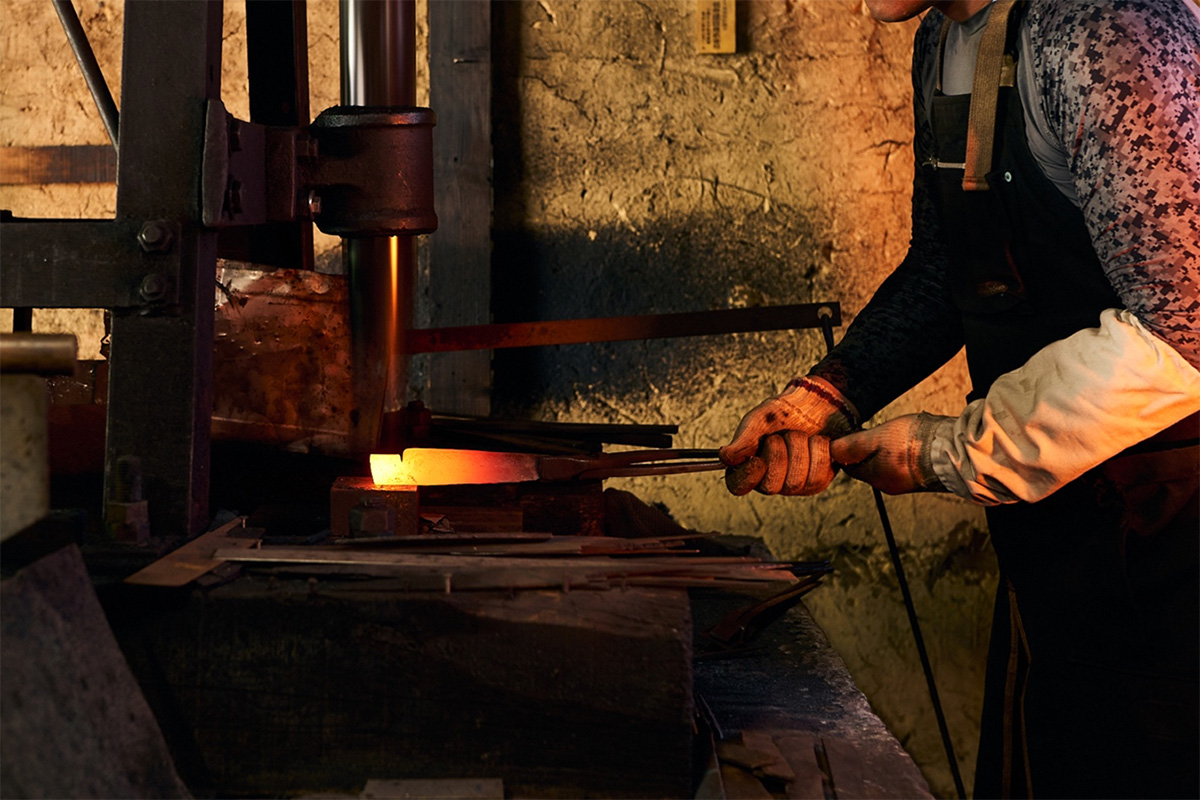
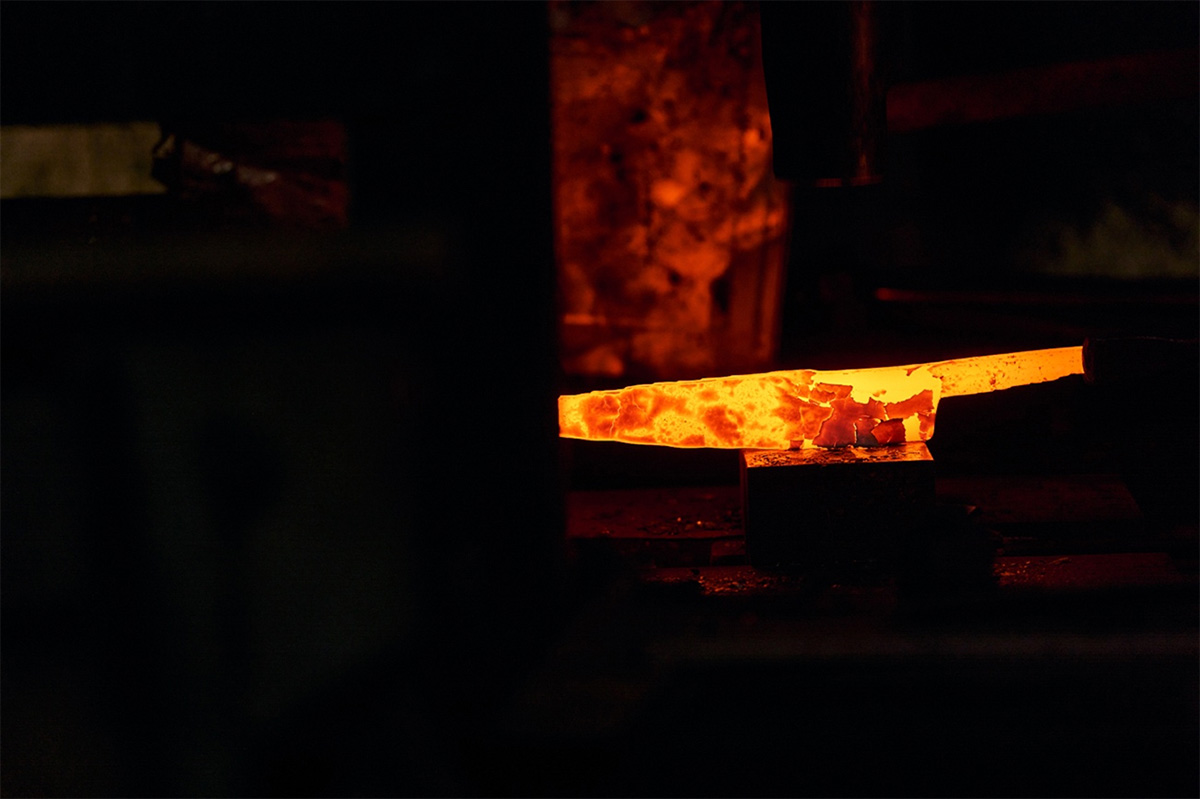
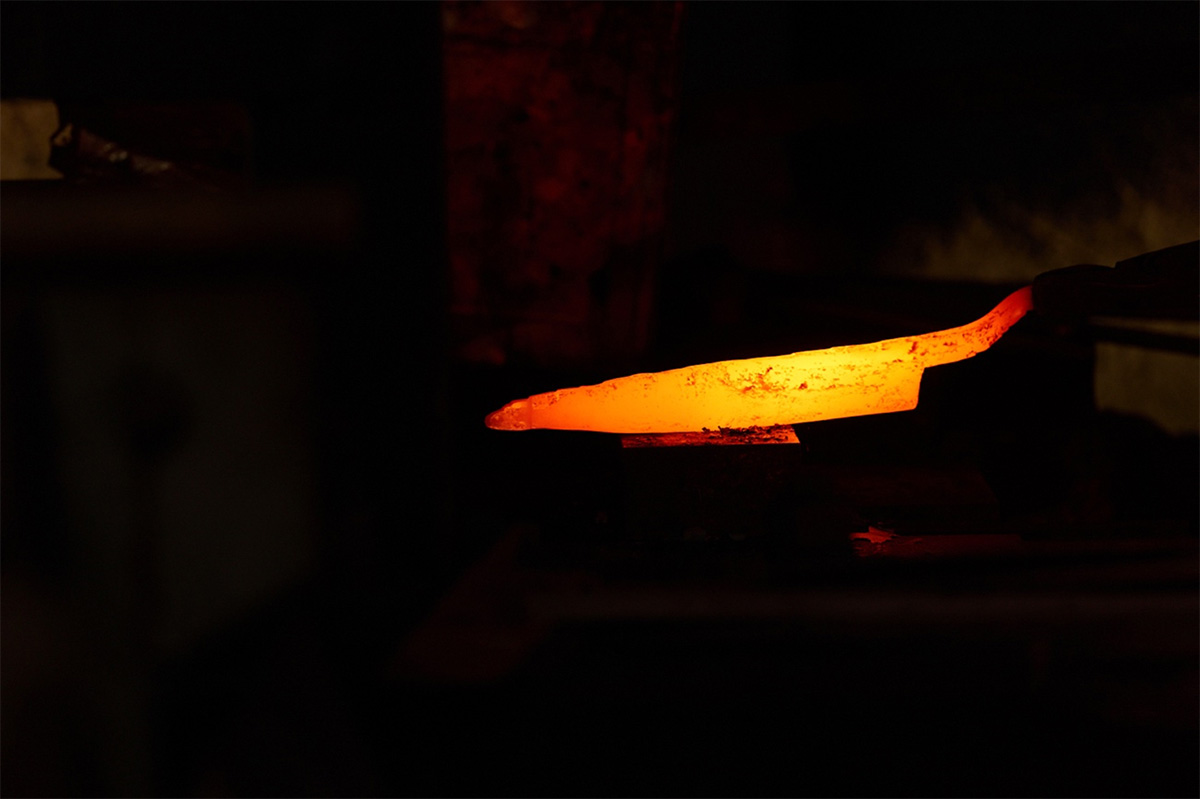
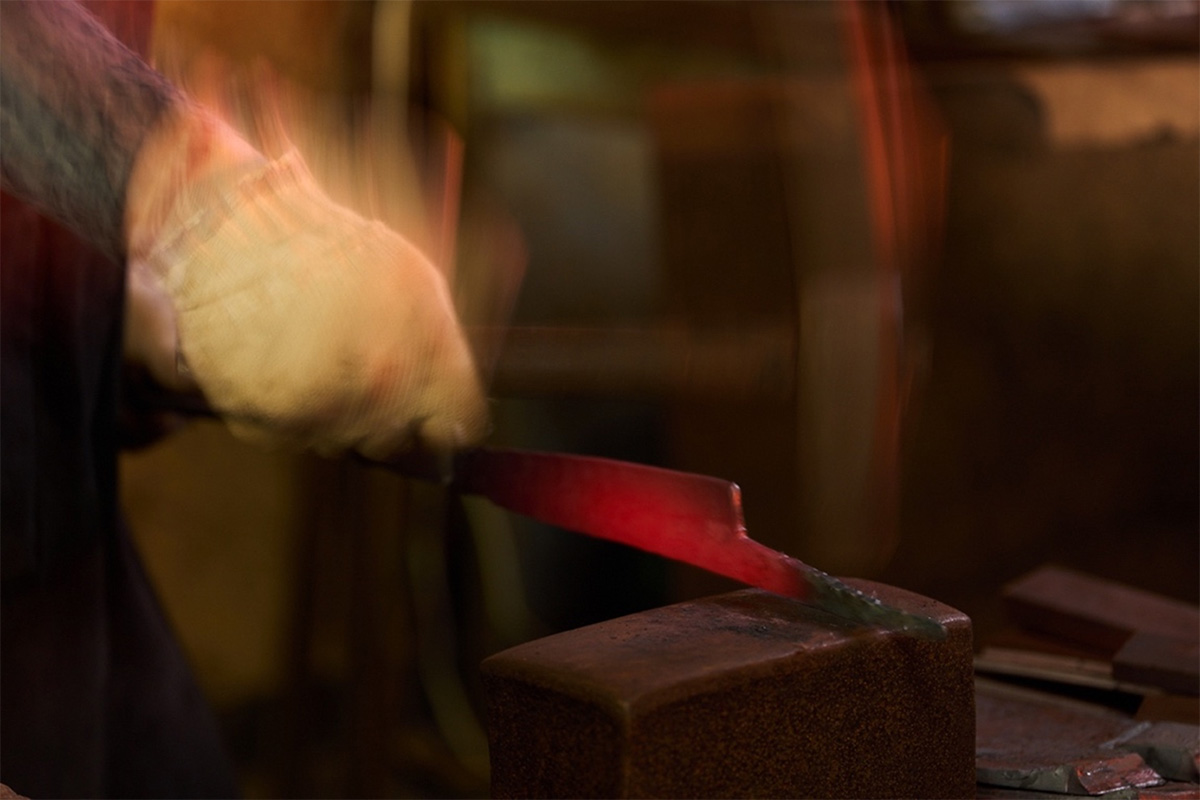
The traditional process of forge-welding iron and steel, known as “tetsu-kake” and “tetsu-sei,” involves hammering the iron to compress and refine its structure. Once the blade is heated, it is said that for about 30 years, the molecules continue to move and live on.
The rhythm of the blacksmith is “Ton-ten-kan, ton-ten-kan.” As the saying goes, “Strike while the iron is hot,” the process is a one-shot deal. If you hesitate, the temperature quickly drops, so it is crucial to carefully judge the right moment, remove the iron from the fire, and hammer it with speed and precision. Timing and accuracy are essential.
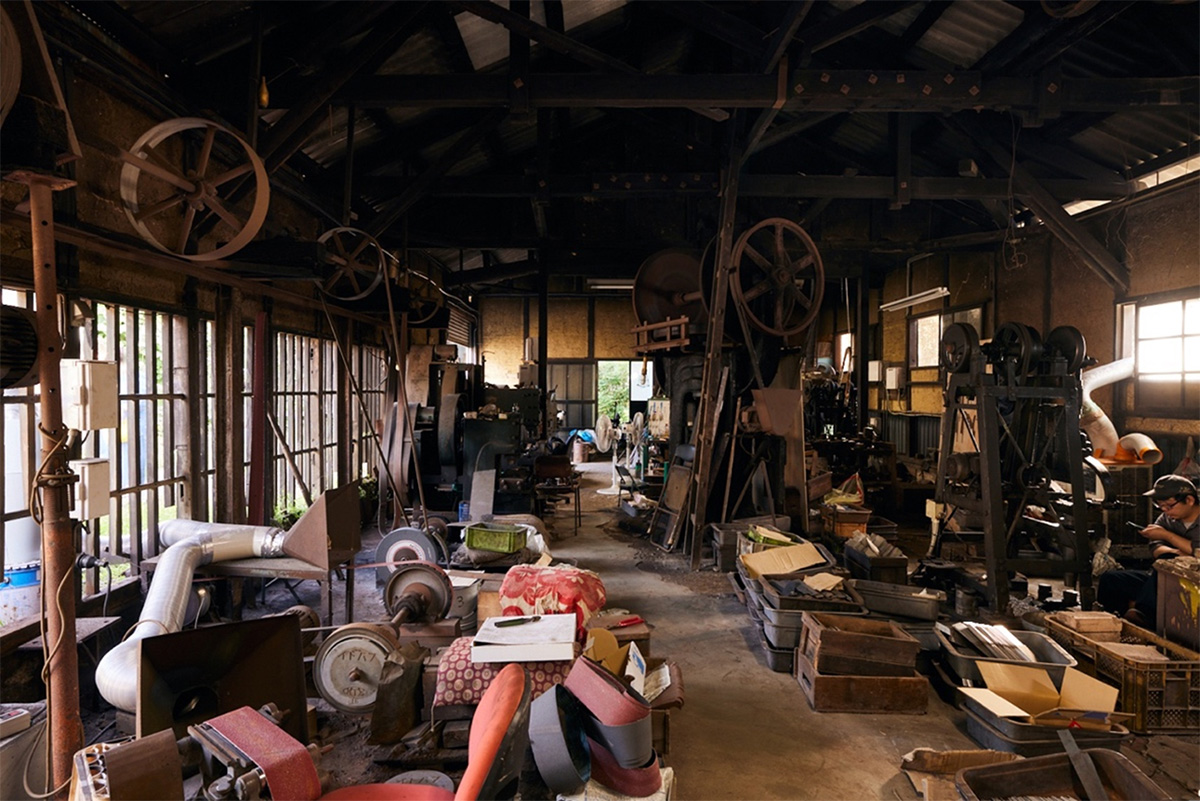
The workshop of Mr. Tanaka, which is 60 years old.
The blacksmith’s workshop consists of both bright and dimly lit spaces. The space on the left, with grid windows that allow natural light to come in, is where the knives are sharpened. The dim space on the right, with windows that are propped open by wooden supports, is intentionally dark to help determine the ideal moment to strike the red-hot iron. A wheel mounted on the ceiling is used to move belts for grinding stones and belt hammers. In the past, due to poor electricity conditions, the workshop was designed with energy efficiency in mind from the construction stage.
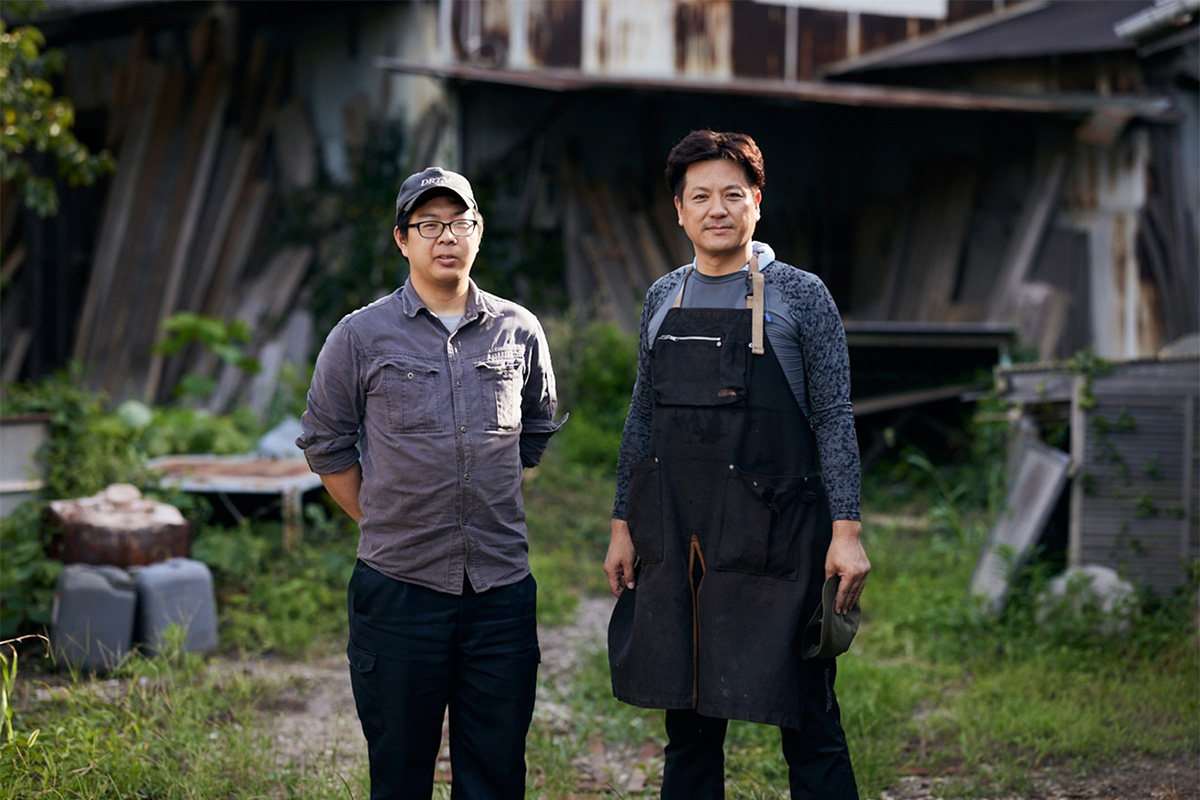
Currently, there are five employees. On the left is the most senior apprentice, Minoru Nagasaka.
Tanaka-san said, “I thought the unwavering dedication of the masters as they hammered the steel was very manly.” Today, there are only a few craftsmen in Japan, like Tanaka-san, who create knives entirely by hand from start to finish.
Tanaka-san, who says, “Once a technique is lost, it can never be revived. That’s why I keep forging for the sake of those who came before me,” also holds hands-on workshops. In addition to making knives, he organizes these workshops for local children and tourists from overseas to help them learn about “real” knives.
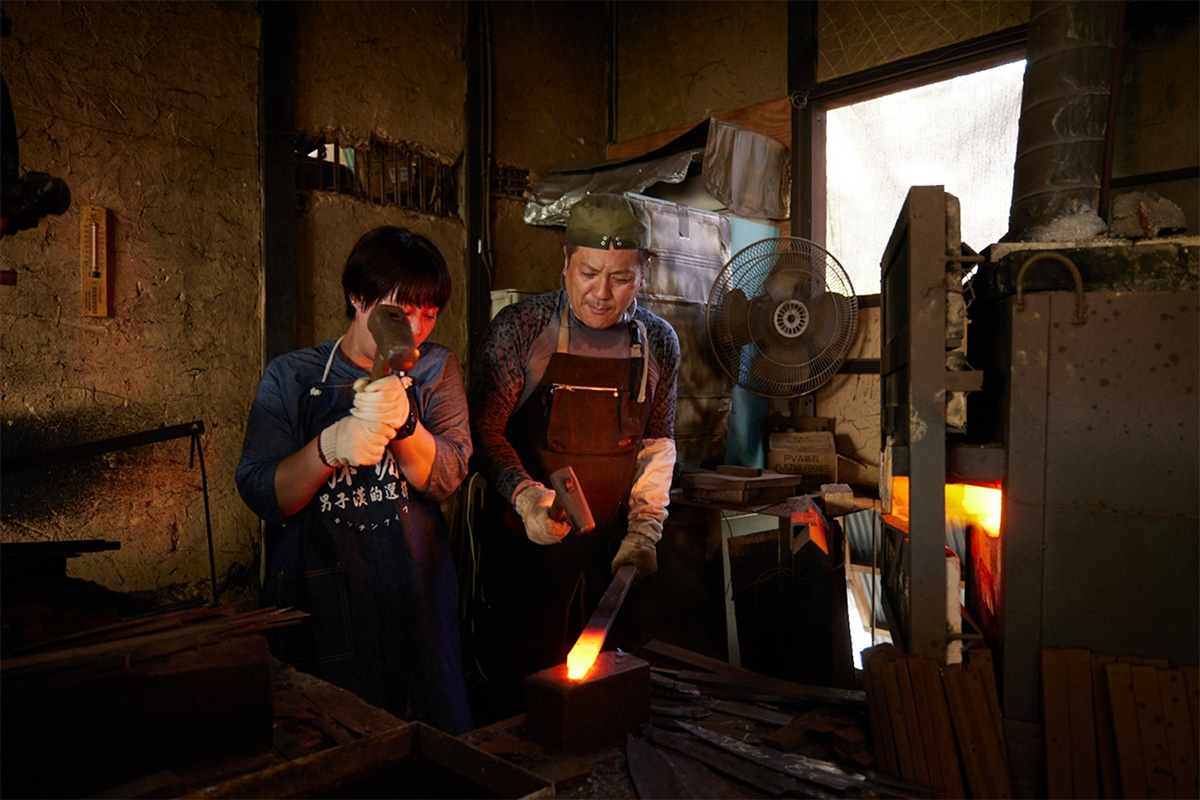
At the forge, you can experience the same process that is still carried out by active blacksmiths today, where red-hot iron and steel are taken out from a 1200-degree furnace and shaped by hammering.
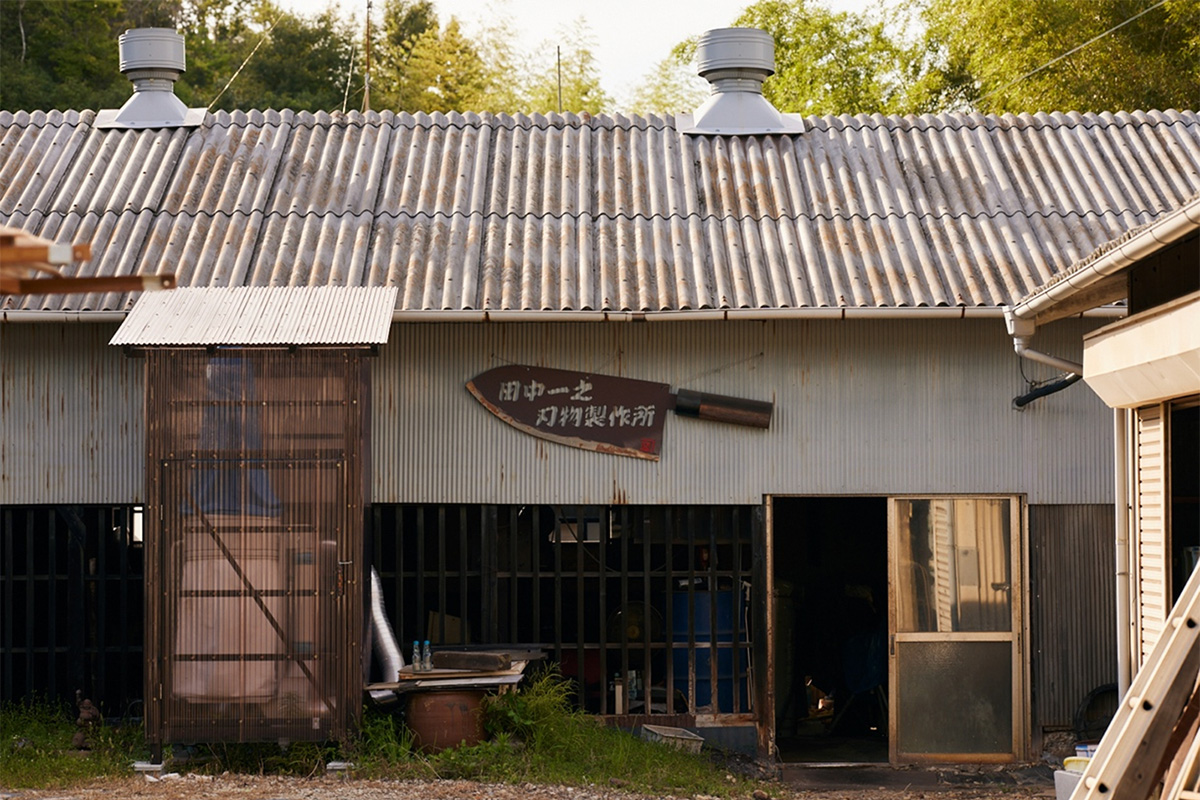
Tanaka Ichinosuke Knives Manufacturing
Address: 875 Ishino, Bessho-cho, Miki City, Hyogo Prefecture
Phone: 0794-82-5660
Hours: 9:00 AM – 5:00 PM
Closed: Thursdays and Sundays
Official Website: https://www.kanegen4th.com/
Sales Site: [Here]